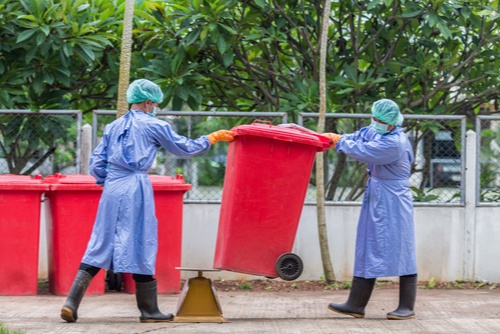Biohazard waste regulations are paramount in ensuring the safe and proper management of materials that pose potential risks to human health and the environment. This comprehensive guide explores the intricacies of biohazard waste regulations, highlighting key protocols and compliance measures essential for healthcare facilities, research institutions, and other entities handling biohazardous materials.
Classification and Identification
Proper classification and identification of biohazard waste are fundamental to compliance with regulations. Biohazardous materials include infectious agents, sharps, contaminated equipment, and laboratory specimens. Facilities must accurately identify biohazard waste using standardized labeling and color-coding systems to prevent accidental exposure and contamination.
Storage and Containment
Biohazard waste must be stored in designated containers that are leak-proof, puncture-resistant, and appropriately labeled. Segregation based on waste type and hazard level is essential to minimize risks during storage and handling. Facilities must establish secure storage areas with restricted access to prevent unauthorized personnel from coming into contact with biohazardous materials.
Transportation and Handling Procedures
Transportation of biohazard waste is subject to strict regulations to prevent spills, leaks, and exposure during transit. Specialized containers and vehicles equipped with containment features are required for safe transport. Personnel responsible for handling biohazard waste must undergo training on proper packaging, loading, and unloading procedures to ensure compliance with regulatory standards.
Treatment and Disposal Methods
Biohazard waste regulations dictate approved treatment and disposal methods to mitigate environmental and public health risks. Common treatment options include autoclaving, incineration, chemical disinfection, and irradiation. Facilities must select appropriate methods based on waste characteristics and regulatory requirements to ensure effective decontamination and sterilization.
Regulatory Oversight and Compliance
Government agencies, such as the Environmental Protection Agency (EPA) in the United States, oversee and enforce biohazard waste regulations to safeguard public health and the environment. Compliance with regulatory standards is mandatory, and facilities may face penalties for non-compliance, including fines and legal action. Regular inspections and audits help ensure adherence to regulations and identify areas for improvement in waste management practices.
Environmental and Public Health Implications
Effective management of biohazard waste is essential to prevent the spread of infectious diseases and protect ecosystems and communities from harm. Improper disposal of biohazard waste can lead to contamination of soil, water, and air, posing significant risks to public health and environmental quality. Compliance with regulations helps mitigate these risks and ensures responsible stewardship of biohazardous materials.
Adherence to biohazard waste regulations is critical for maintaining safety and sustainability in healthcare, research, and other industries handling biohazardous materials. By implementing proper classification, storage, transportation, treatment, and disposal procedures, facilities can minimize risks associated with biohazard waste and demonstrate commitment to regulatory compliance. Through ongoing education, training, and collaboration with regulatory authorities, organizations can effectively navigate the complexities of biohazard waste management and contribute to a safer, healthier environment for all.


No comments yet